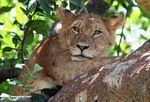At least 60 big cats have been killed within national protected areas in Brazil during the past two years according to a recent survey published in mongabay.com’s open access journal Tropical Conservation Science (TCS). The report, which focuses on jaguar (Panthera onca) and puma (Puma concolor) populations, within Brazilian protected areas shows that reserve management and use restrictions impact the level of big cat hunting.
Results collected from a questionnaire sent to a sample of reserve managers shows reports of hunting was 3 times more frequent in reserves with less restriction for human use. The study also shows that hunting had occurred in nearly 50% of reserves known to have populations of big cat.
Hunting is rarely reported and when reports are made they are hardly ever followed through with legal prosecution. This could mean that residents near less restricted reserves are not concerned with being prosecuted leading to higher levels of hunting being reported in these areas.
Both jaguars and pumas have international protection against hunting. Jaguars are listed as Near Threatened on the IUCN’s red list and included on CITIES Appendix 1, while pumas are listed as Least Concern and included on Appendix 2. These classifications mean the hunting of both species is illegal. The scientists comment that “hunting is widespread in protected areas and that legal protected status is no guarantee of actual protection.”
Even with this report there is still insufficient data and the number of big cat deaths is just an estimate. It is likely the actual number of deaths is much higher. “More studies are needed to evaluate death rates, factors associated with hunting, the effects of human population size and of specific management measures. Most important is the need to know how hunting affects population viability in these areas” explains the scientists. Furthermore, the scientists suggest “managers of protected areas should try to systematize the available information and investigate possible cases. Only by recognizing the problem will it be possible to take measures to solve it.”

Jaguar in Brazil. Photo by: Rhett A. Butler.
CITATION: Carvalho Jr, E.A.R and Morato, R.G. 2013. Factors affecting big cat hunting in Brazilian protected areas. Tropical Conservation Science Vol. 6(2):303-310
Related articles
Tibetan monks partner with conservationists to protect the snow leopard
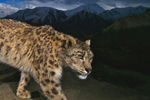
(06/10/2013) Tibetan monks could be the key to safeguarding the snow leopard (Panthera uncia) from extinction, according to an innovative program by big cat NGO Panthera which is partnering with Buddhist monasteries deep in leopard territory. Listed as Endangered by the IUCN Red List, snow leopard populations have dropped by a fifth in the last 16 years or so. Large, beautiful, and almost never-seen, snow leopards are the apex predators of the high plateaus and mountains of central Asia, but their survival like so many big predators is in jeopardy.
Snowy tigers and giant owls: conservation against the odds in Russia’s Far East
-WCS-Russia.150.jpg)
(05/28/2013) The Russian Far East is one of the wildest places on Earth: where giant tigers roam snow-covered forests and the world’s biggest owls stalk frozen rivers. Bordering northern China and North Korea, the forests of Primorye are known for the diversity of habitats, including coastal forests along the Sea of Japan, vast coniferous forests in the Sikhote-Alin mountains, and even steppe. These diverse ecosystems also makes the forests a hotspot for endangered species, including Amur tigers (Panthera tigris altaica), Blakiston’s fish owls (Bubo blakistoni), and one of the world’s rarest big cats, Amur leopards (Panthera pardus orientalis), which number only 30-50 animals.
Prince Charles: take the war to the poachers
(05/22/2013) Prince Charles has warned that criminal gangs are turning to animal poaching, an unprecedented slaughter of species that can only be stopped by waging war on the perpetrators, in the latest of a series of increasingly outspoken speeches about the environment. Addressing a conference of conservationists at St James’s Palace in London, the Prince of Wales announced a meeting of heads of state to take place this autumn in London under government auspices to combat what he described as an emerging, militarized crisis.
Scientists capture one of the world’s rarest big cats on film (photos)
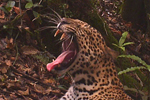
(05/21/2013) Less than a hundred kilometers from the bustling metropolis of Jakarta, scientists have captured incredible photos of one of the world’s most endangered big cats: the Javan leopard (Panthera pardus melas). Taken by a research project in Gunung Halimun-Salak National Park, the photos show the magnificent animal relaxing in dense primary rainforest. Scientists believe that fewer than 250 mature Javan leopard survive, and the population may be down to 100.
Crazy cat numbers: unusually high jaguar densities discovered in the Amazon rainforest
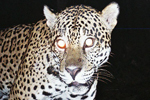
(05/16/2013) Jaguars (Panthera onca) are the biggest cat in the Americas and the only member of the Panthera genus in the New World; an animal most people recognize, the jaguar is also the third largest cat in the world with an intoxicatingly dangerous beauty. The feline ranges from the harsh deserts of southern Arizona to the lush rainforests of Central America, and from the Pantanal wetlands all the way down to northern Argentina. These mega-predators stalk prey quietly through the grasses of Venezuelan savannas, prowl the Atlantic forests of eastern Brazil, hunt along the river of the Amazon, and even venture into lower parts of the Andes.
Endangered primates and cats may be hiding out in swamps and mangrove forests

(05/02/2013) What happens to animals when their forest is cut down? If they can, they migrate to different forests. But in an age when forests are falling far and fast, many species may have to shift to entirely different environments. A new paper in Folia Primatologica theorizes that some 60 primate species and 20 wild cat species in Asia and Africa may be relying more on less-impacted environments such as swamp forests, mangroves, and peat forests.
Lions for sale: big game hunting combines with lion bone trade to threaten endangered cats
(04/18/2013) Koos Hermanus would rather not give names to the lions he breeds. So here, behind a 2.4-meter high electric fence, is 1R, a three-and-a-half-year-old male, who consumes 5kg of meat a day and weighs almost 200kg. It will only leave its enclosure once it has been “booked”‘ by a hunter, most of whom are from the United States. At that point the big cat will be set loose in the wild for the first time in its life, 96 hours before the hunt begins. It usually takes about four days to track down the prey, with the trophy hunter following its trail on foot, accompanied by big-game professionals including Hermanus. He currently has 14 lions at his property near Groot Marico, about two and a half hours by road west of Johannesburg.
Amur leopard population rises to 50 animals, but at risk from tigers, poachers
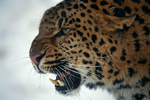
(04/09/2013) In the remote Russian far east, amid pine forests and long winters, a great cat may be beginning to make a recovery. A new survey estimates that the Amur leopard (Panthera pardus orientalis) population has risen to as many as 50 individuals. While this may not sound like much, it’s a far cry from the a population that may have fallen to just 25 animals. Sporting the heaviest coat of any leopard, the Amur leopard largely hunts hoofed animals, such as deer and boar, in a forest still ruled by the Siberian tiger.
